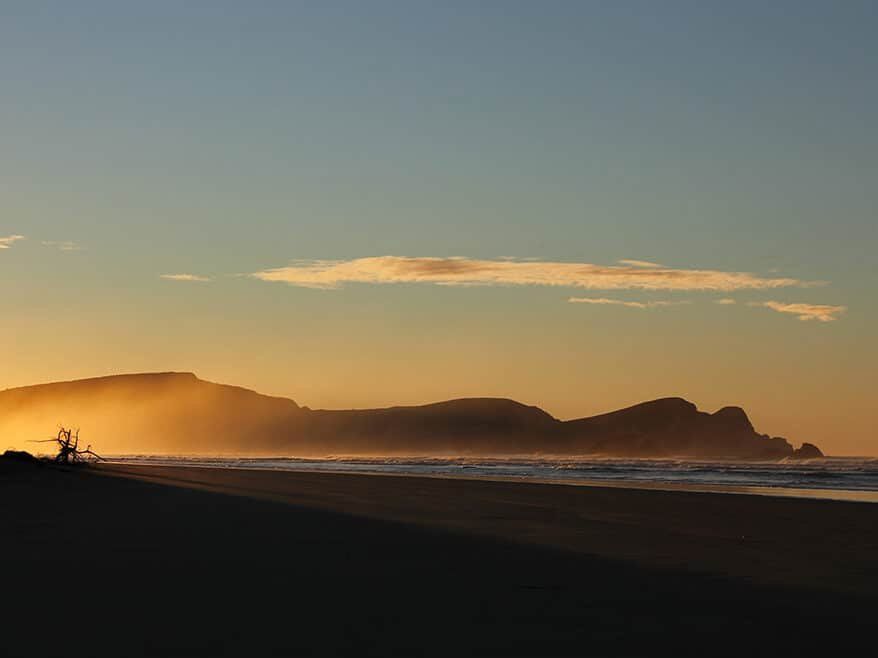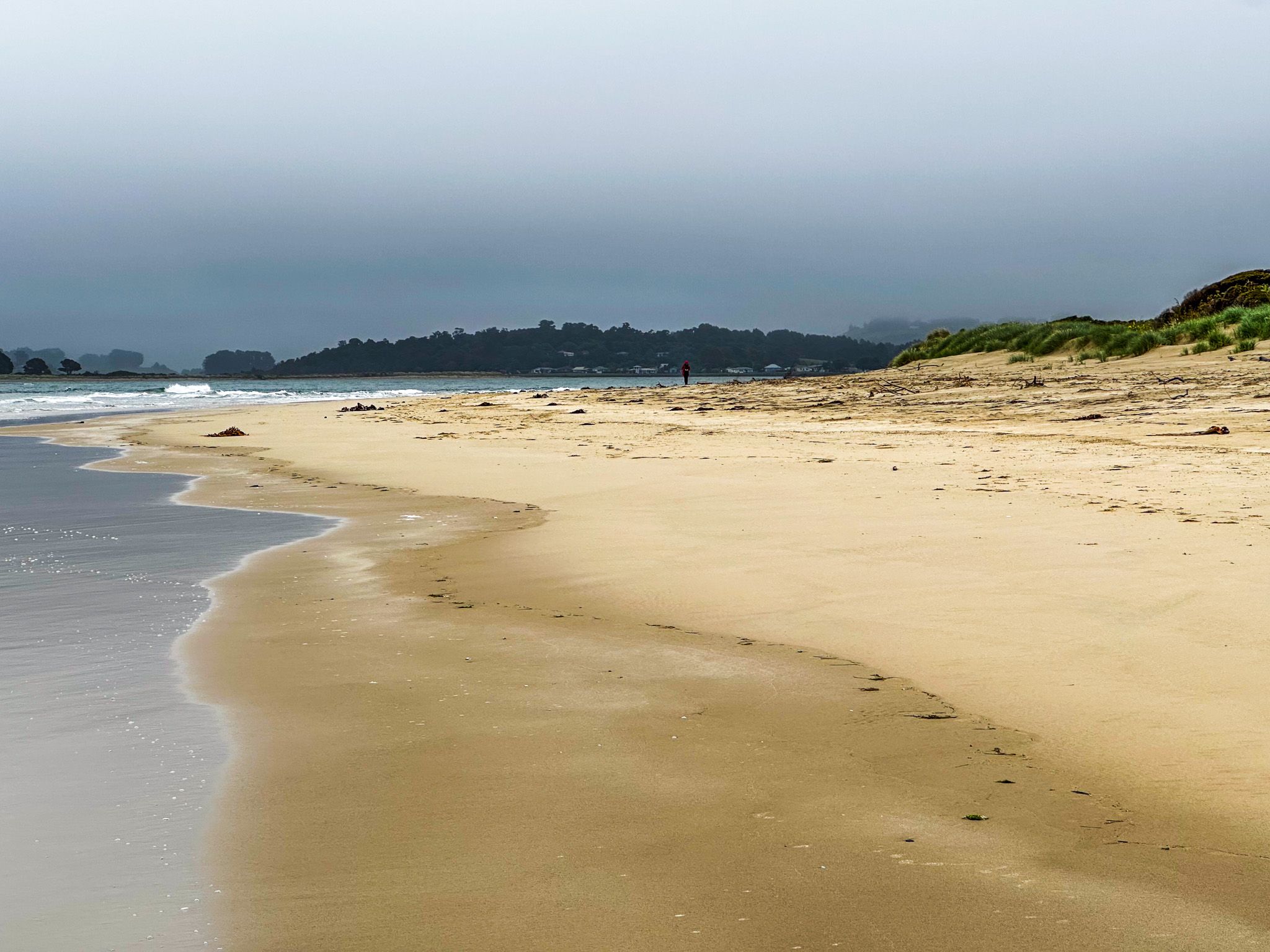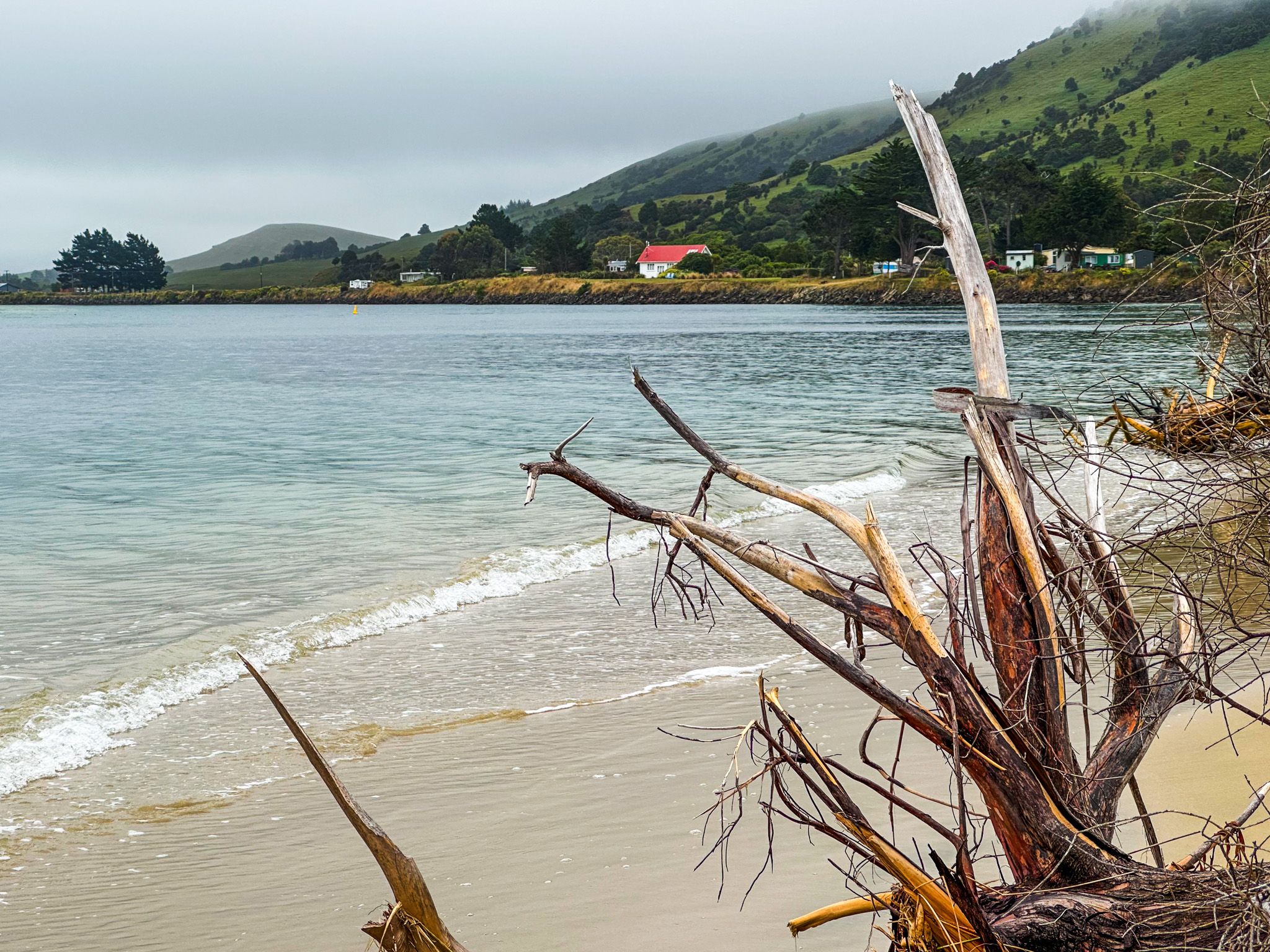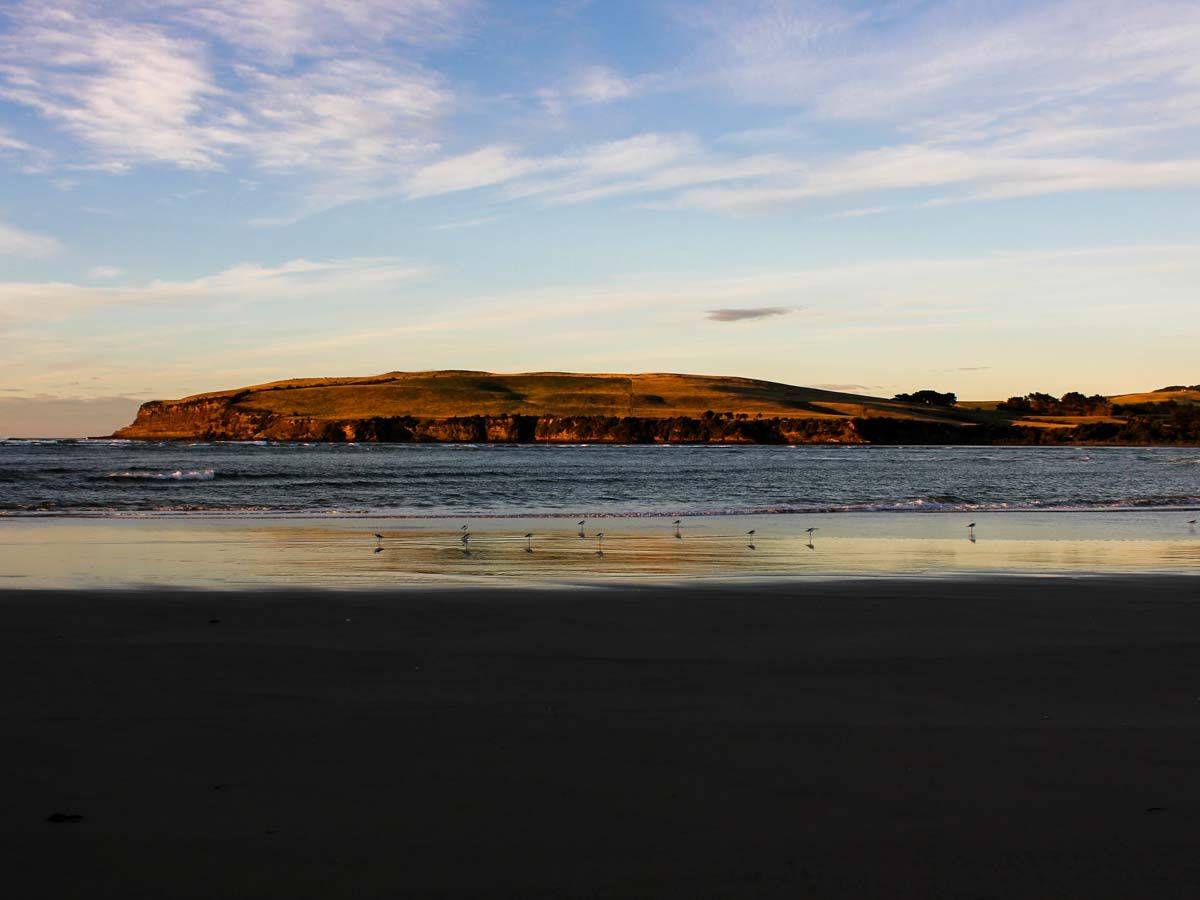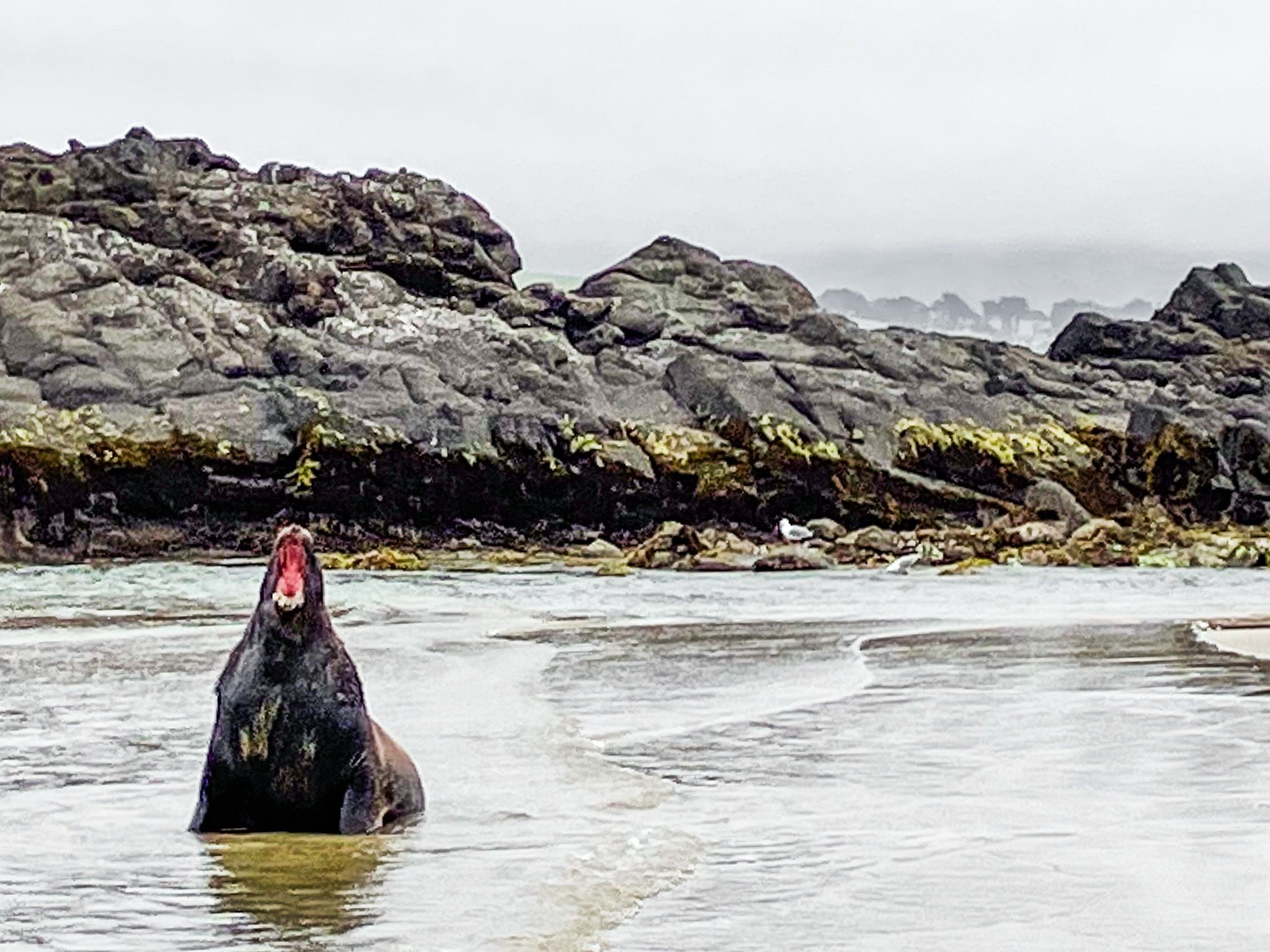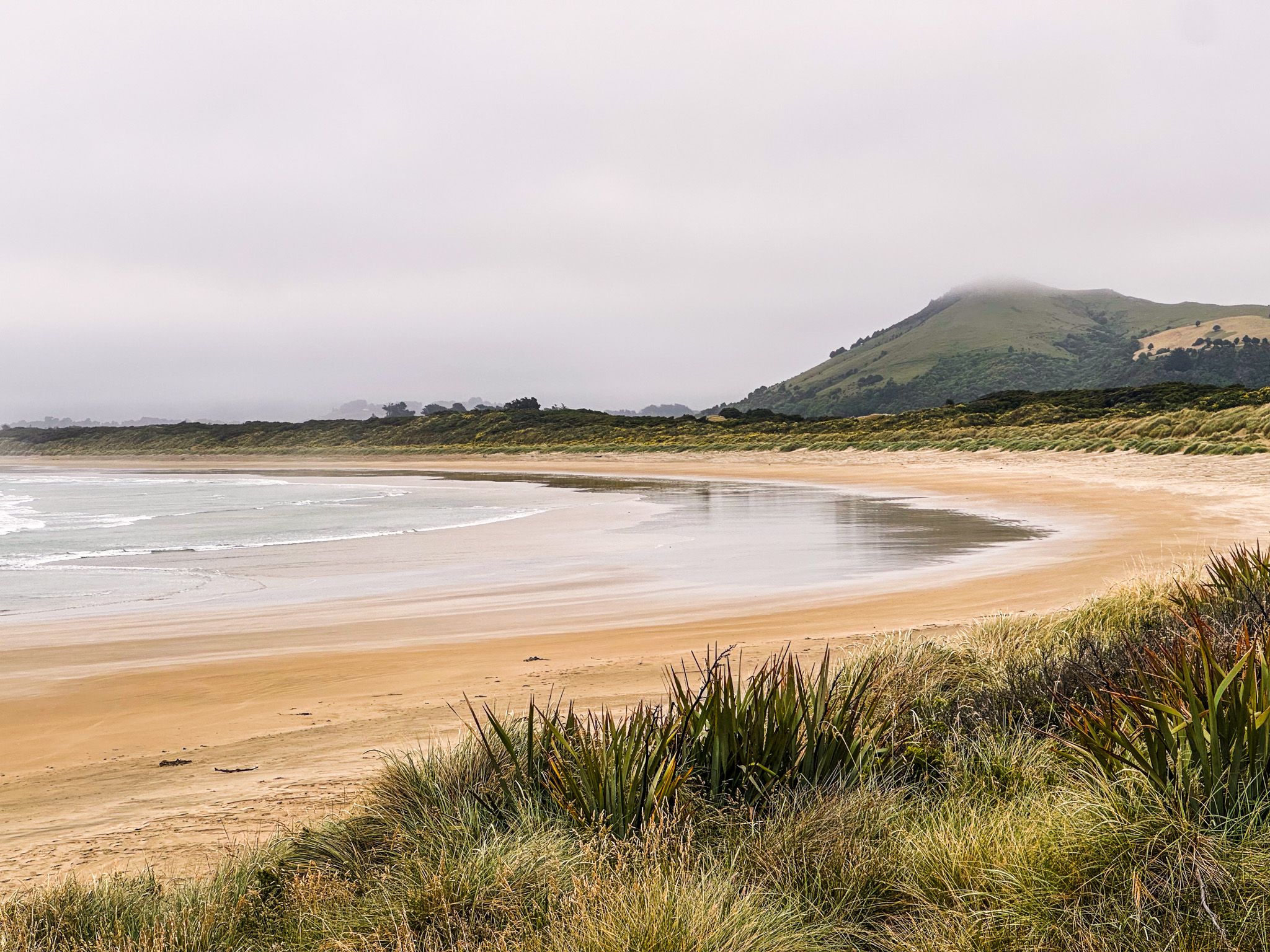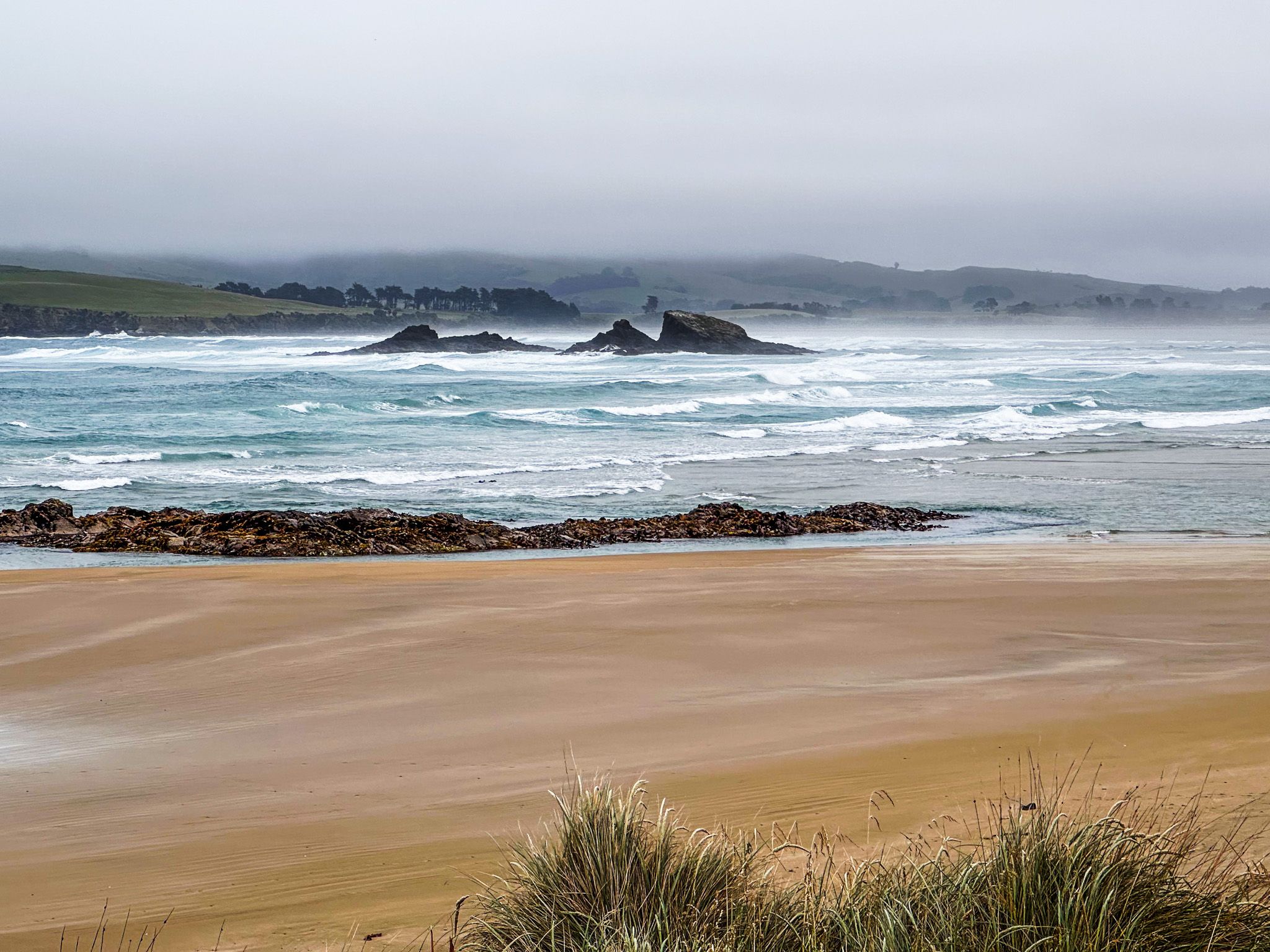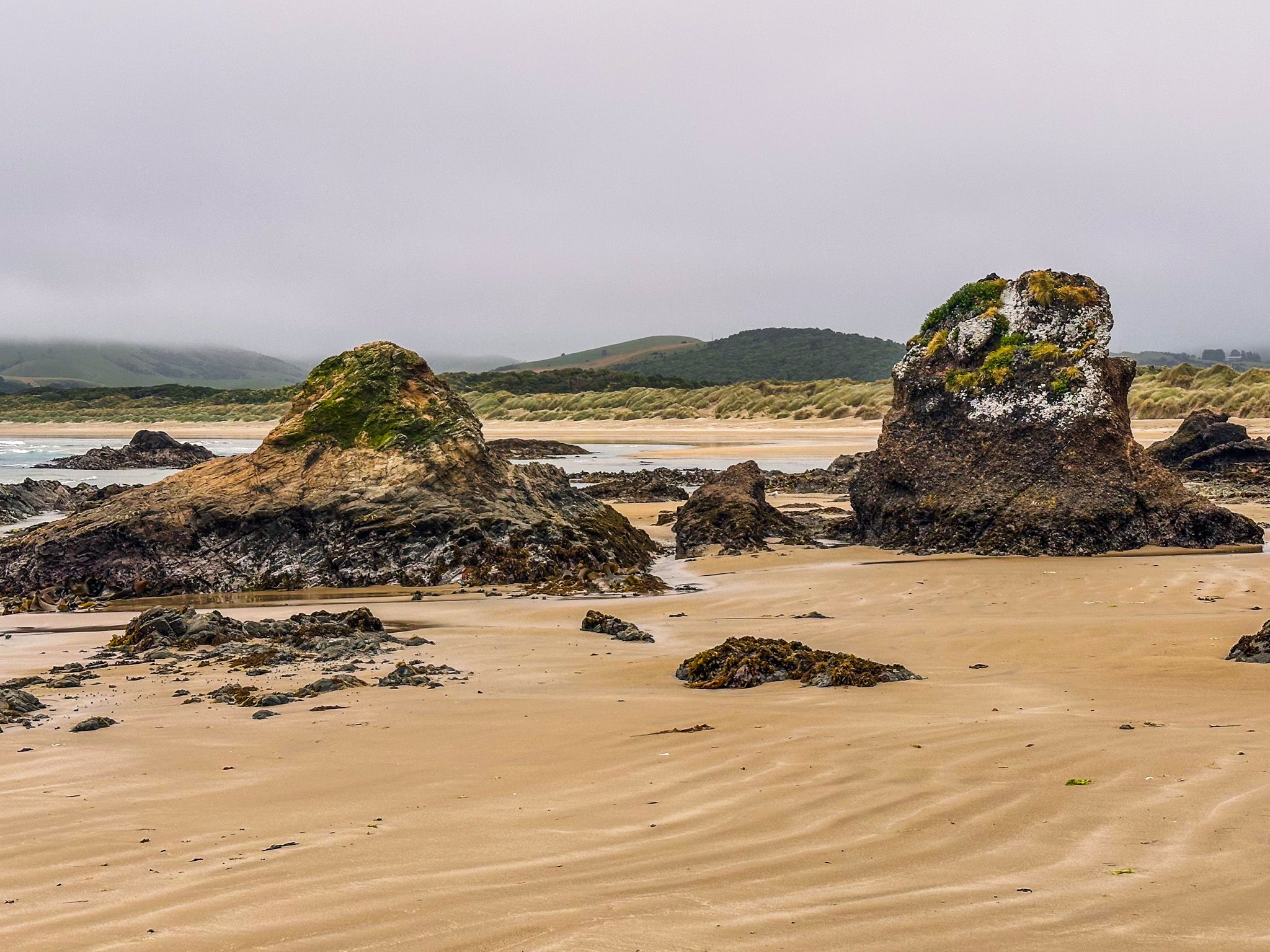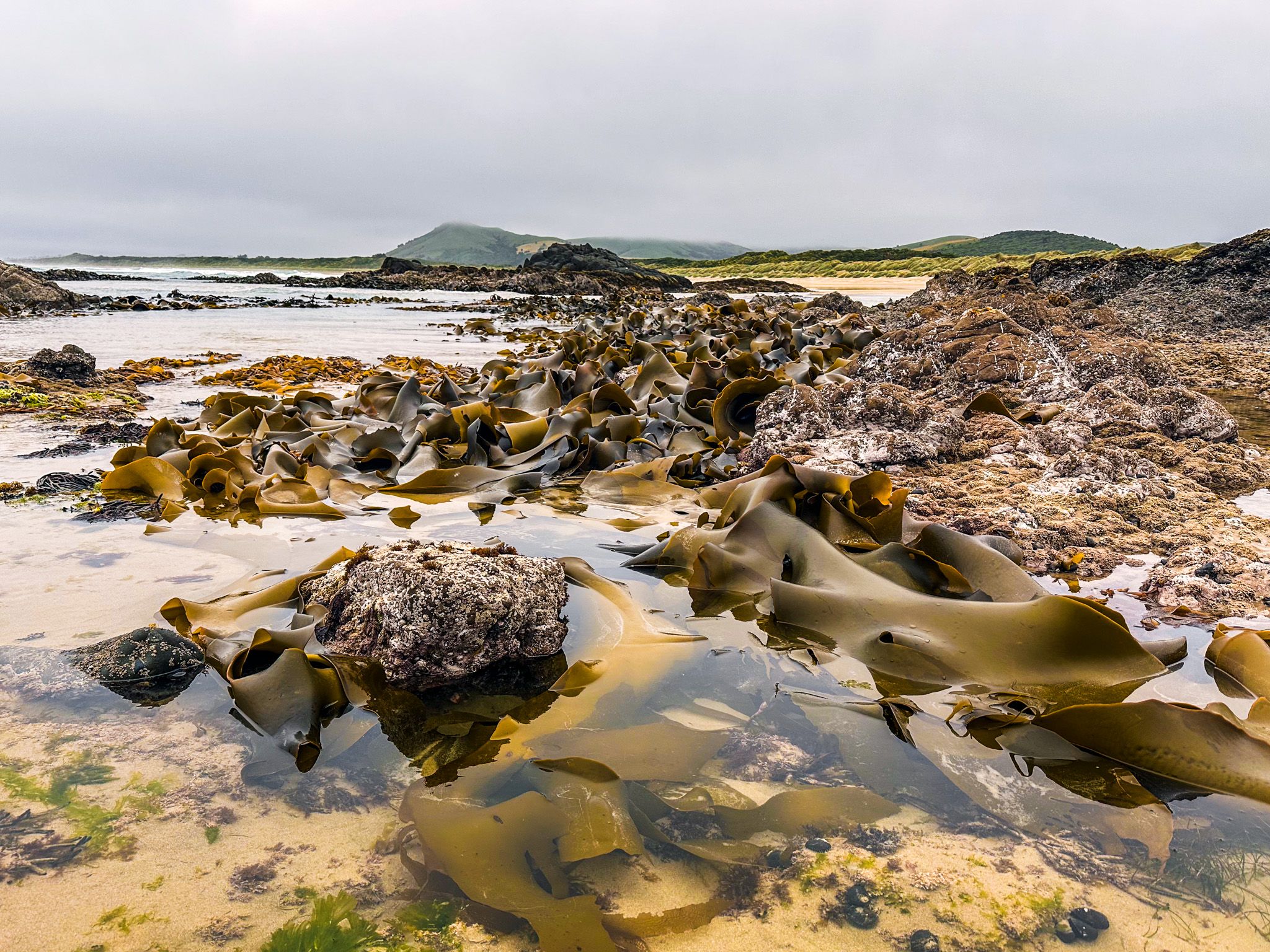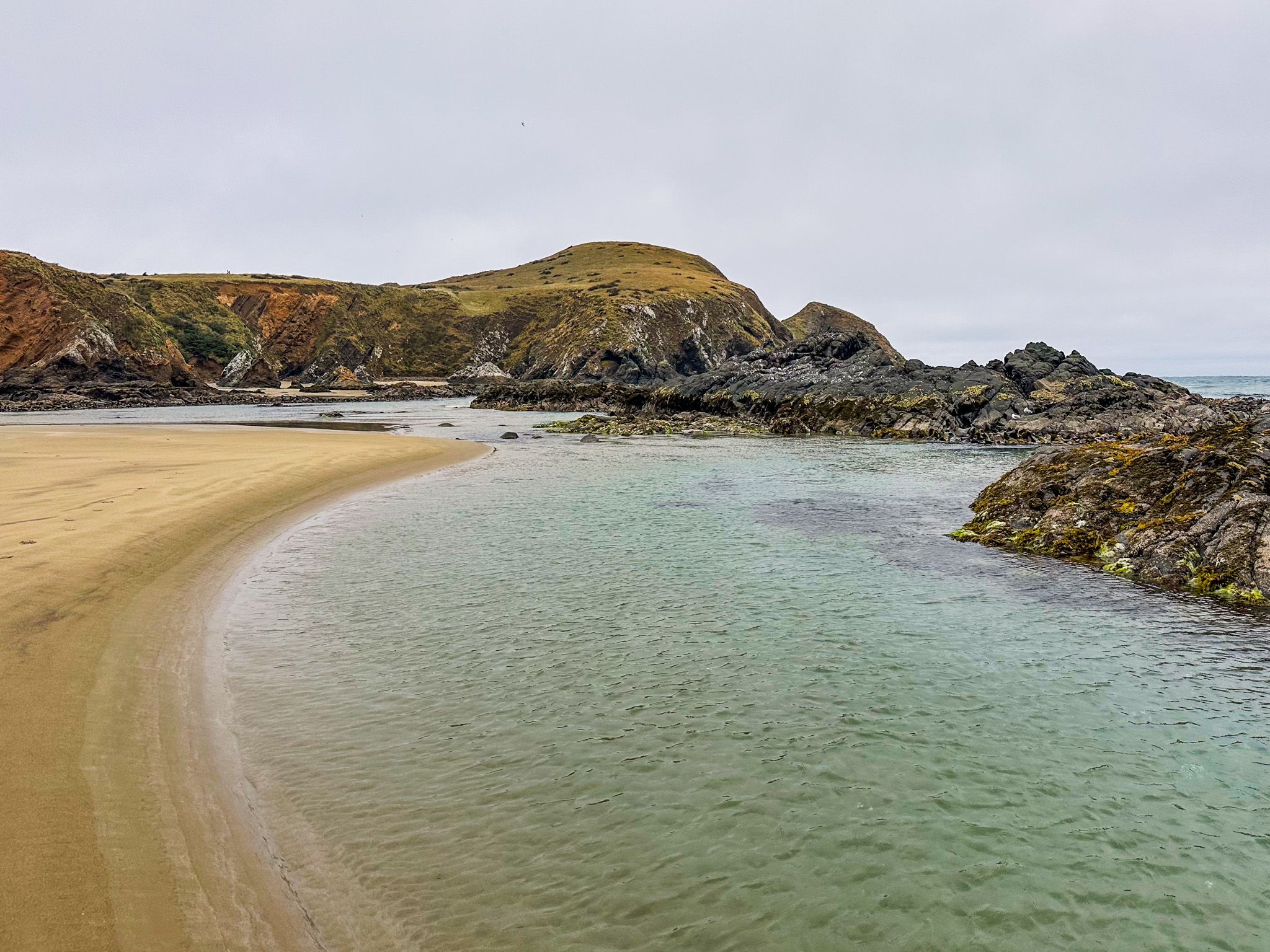Discovering Surat Bay's Natural Beauty
Surat Bay, located on the Pacific Ocean in the Catlins, is a remote beach known for its stunning sunsets. Facing south, it offers a unique view as the sun dips below the horizon. Accessing this secluded spot requires some effort, as you can either walk 1.5 km over the dunes from Cannibal Bay to the east end or take a 600-metre walk from the small holiday hamlet of Newhaven. The latter route involves traversing scrubland and following the river estuary to the west end of the beach.
Exploring the Beach and Wildlife
The east end of Surat Bay is marked by intriguing rocky cliffs and tidal pools, while the west end is bordered by the river mouth. In the centre, you'll find a distinctive group of rocks known as the Triplets. Once on the beach, you have the opportunity to see pakake, or sea lions, which are a highlight of the Catlins. However, spotting them may require a 3 km walk from one end of the beach to the other.
Historical Significance of Surat Bay
Originally named Forsyth's Bay by Europeans, the bay was renamed Surat Bay after the sailing ship Surat was wrecked there on New Year’s Day in 1874. The ship, carrying migrants and cargo from England to Dunedin, was deliberately beached to avoid sinking after being blown into the river mouth. Remarkably, all passengers survived, despite the ship's captain being incompetent and possibly intoxicated. A sign at the start of the track in Newhaven indicates where the shipwreck once lay, although it has long since disappeared.
How to Get to Surat Bay
To reach Newhaven and Surat Bay, take Southern Scenic Route from the Southern Scenic Route at the east end of Owaka. Cross the bridge over the Owaka River to Newhaven Road and follow it to the road's end. You can easily combine your visit with a side trip to Pounawea, located on the estuary between the Catlins River and Owaka River. Accommodation is available in Newhaven, but note that there is no freedom camping near the trailhead for Surat Bay.
